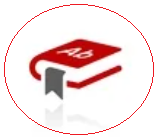SIBU - SISTEMAS DE BIBLIOTECAS UNICOC
The biomechanical foundation of clinical orthodontics
por Burstone, Charles J ; Choy, Kwangchul
; Choy, Kwangchul .
.
Editor: Berlin Quintessence Publishing 2015Edición: 1 ed.Descripción: 580 paginas.ISBN: 9780867156515; 0867156511; 9780867157055.Tema(s): Biomecánica dental| Tipo de ítem | Ubicación | Colección | Signatura topográfica | Número de copia | Estado | Fecha de vencimiento | Código de barras | Reserva de ejemplares |
|---|---|---|---|---|---|---|---|---|
 Libro Libro |
Bogotá (Dr. David Ordóñez Rueda) - Campus Norte
Segundo piso
Campus Norte Biblioteca de la Institución Universitaria Colegios de Colombia |
Colección General | 617.643 B972 2015 (Navegar estantería) | Ej. 1 | Disponible | 23732 |
Part I. The Basics and Single-Force Appliances 1 Why We Need Biomechanics 2 Concurrent Force Systems 3 Nonconcurrent Force Systems and Forces on a Free Body 4 Headgear 5 The Creative Use of Maxillomandibular Elastics 6 Single Forces and Deep Bite Correction by Intrusion 7 Deep Bite Correction by Posterior Extrusion 8 Equilibrium Part II. The Biomechanics of Tooth Movement 9 The Biomechanics of Altering Tooth Position 10 3D Concepts in Tooth Movement 11 Orthodontic Anchorage 12 Stress, Strain, and the Biologic Response Part III. Advanced Appliance Therapy 13 Lingual Arches 14 Extraction Therapies and Space Closure 15 Forces from Wires and Brackets 16 Statically Determinate Appliances and Creative Mechanics 17 Biomechanics and Treatment of Dentofacial Deformity 18 The Biomechanics of Miniscrews Part IV. Advanced Mechanics of Materials 19 The Role of Friction in Orthodontic Appliances 20 Properties and Structures of Orthodontic Wire Materials 21 How to Select an Archwire
All orthodontic treatment modalities can be improved by the application of sound biomechanics, yet most orthodontic therapy today is delivered without consideration of forces or force systems. Orthodontic hardware itself is only a means to an end point, such as tooth alignment, bone remodeling, or growth modification; the orthodontist can achieve these goals only by manipulating forces, regardless of the techniques used. Written by a world-renowned authority on the subject, this book teaches biomechanics in an easy-to-understand and engaging way, using universal examples outside orthodontics to illustrate basic force systems and how they function and then applying these principles to the practice of clinical orthodontics. The authors cover all of the force systems an orthodontist needs to understand to deliver effective treatment, explaining how each can be controlled and manipulated and demonstrating the forces at work through highly instructive 3D illustrations. Most chapters conclude with the presentation of several study problems, allowing the reader an opportunity to practice developing treatment plans using the biomechanical concepts discussed in each chapter. (Answers are provided at the end of the book.) This book is sure to be an instant classic.
Unicoc
Inglés
© 2014 UNICOC | Institución Universitaria Colegios de Colombia - UNICOC
Bogotá D.C. Autopista Norte Km. 20. Teléfono:(571)6683535
Cali: Calle 13 Norte No. 3N-13. Teléfono: (572)6608887




